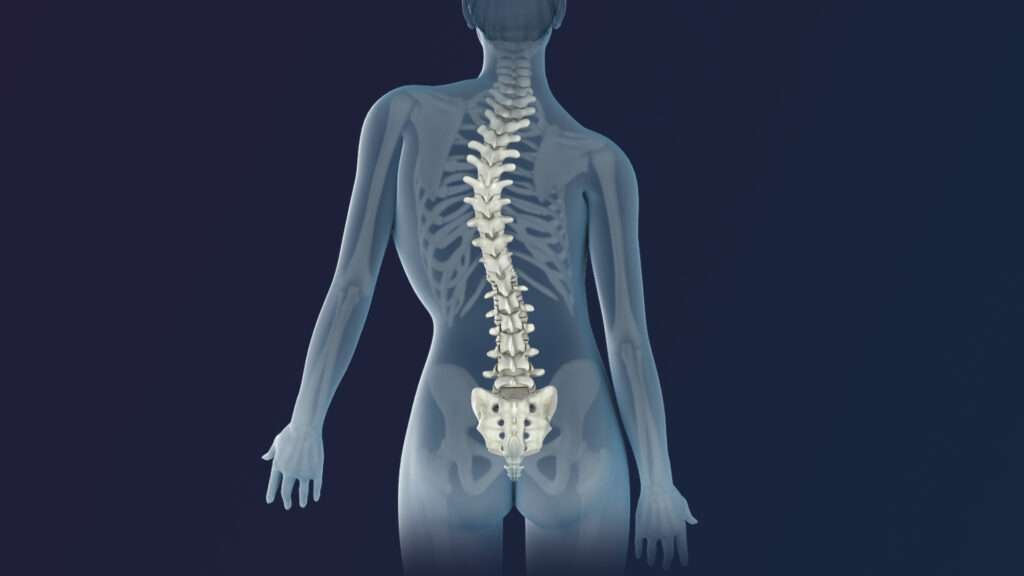
What is scoliosis?
Scoliosis is a condition that causes the spine to curve sideways, instead of running straight down the back. This curvature can occur in different parts of the spine and can range from mild to severe. Scoliosis can affect people of all ages, but it most commonly develops during adolescence. While some cases of scoliosis are mild and require no treatment, others can be more severe and may require medical intervention.
What are the symptoms of scoliosis?
The most common symptom of scoliosis is an abnormal curvature of the spine, which can cause the shoulders, hips, or waist to appear uneven. Other symptoms may include back pain, muscle spasms, and fatigue. In severe cases, scoliosis can also affect breathing and heart function. It’s important to note that scoliosis can develop slowly over time, so it’s important to monitor any changes in posture or appearance of the spine.
What are the Causes of Scoliosis?
The exact cause of scoliosis is unknown in most cases, but it is believed to be a combination of genetic and environmental factors. Some cases of scoliosis are present at birth (congenital scoliosis), while others develop during childhood or adolescence (idiopathic scoliosis). Neuromuscular conditions such as cerebral palsy or muscular dystrophy, as well as degenerative conditions such as osteoporosis or arthritis, can also cause scoliosis.
How is scoliosis diagnosed?
Scoliosis is typically diagnosed through a physical exam, where a healthcare provider will look for signs of curvature in the spine. They may also order imaging tests, such as X-rays or MRIs, to get a better look at the spine and determine the severity of the curvature. In some cases, a referral to a specialist, such as an orthopedic surgeon or a spine specialist, may be necessary for further evaluation and treatment.
What are the treatment options for scoliosis?
Treatment options for scoliosis depend on the severity of the curvature and the age of the patient. Mild cases may only require monitoring and regular check-ups to ensure the curvature does not worsen. In more severe cases, bracing may be recommended to prevent further curvature. In extreme cases, surgery may be necessary to correct the curvature and prevent further damage to the spine. Exercise and physical therapy may also be recommended to improve posture and strengthen the muscles that support the spine. It is important to work with a healthcare provider to determine the best treatment plan for each individual case.
Exercises to Manage Scoliosis
If you or your child has scoliosis, there are a number of exercises that can help to manage the condition and improve your quality of life. Regular exercise is important for people with scoliosis, as it can help to strengthen the muscles around the spine and improve flexibility. There are a number of different exercises that can be beneficial, and it is important to find ones that work best for you.
Swimming is a great option for people with scoliosis, as it is low-impact and can help to strengthen the muscles around the spine. Water aerobics can also be beneficial. Other good options include Pilates, yoga, and Tai Chi. These exercises help to improve flexibility and balance, which can also help reduce pain associated with scoliosis. It is important to talk to your doctor before starting any new exercise program, as they can advise you on what will be most beneficial for you.
Living with Scoliosis: Coping Strategies and Support
Living with scoliosis can be challenging, both physically and emotionally. It is important to have a support system in place, whether it be family, friends, or a support group. Coping strategies such as practising good posture, staying active, and seeking professional help for any mental health concerns can also be helpful. It is important to remember that with proper management and treatment, individuals with scoliosis can lead full and active lives.
Conclusion
Scoliosis of the spine is a complex condition, and it affects people differently. It’s important to understand the symptoms and how they can be managed so that an individual can take control of their health, lifestyle, and quality of life. With the right treatments in place, living with scoliosis does not have to be a hindrance or prevent you from leading a full life. By understanding what scoliosis is and how it can affect your body, you can move forward in getting proper care for your spinal health.
